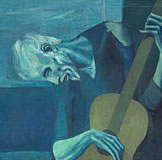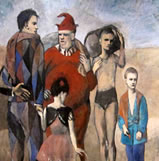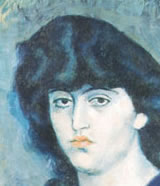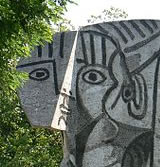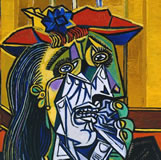The Weeping Woman
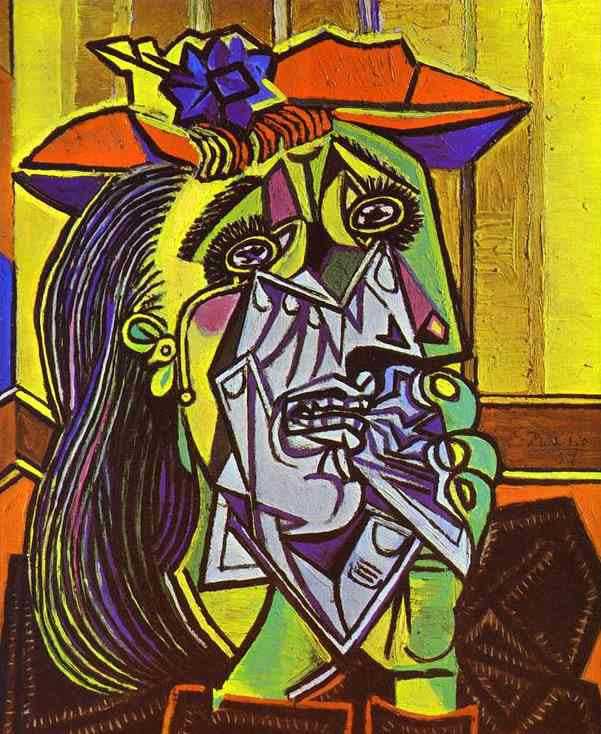
Completed in 1937, Picasso's The Weeping Woman is part of a series of paintings meant as a continuation of the tragedy depicted in an earlier work known as Guernica. The Weeping Woman herself was named Dora Maar, a photographer, and Picasso's mistress from 1936 through 1944. Picasso painted the Weeping Woman in response to graphic war images published in Spanish newspapers during World War II. Picasso made several portraits of Dora Maar in suffering or tortured poses and explained "Dora, for me, was always a weeping woman....And it's important, because women are suffering machines."
Back to top
Sylvette

Lydia Sylvette David was a 17 year-old, pony-tail wearing woman who owned a pottery studio near Picasso's studio in Vallaruis, France. Picasso was taken with the woman's striking looks and created 40 works inspired by her. The concrete example above was fashioned by Picasso's friend Carl Nesjar in 1970 and was an enlargement of a smaller sculpture Picasso made in 1954. The large sculpture now stands in the city of Rotterdam, Netherlands.
Back to top
The Old Guitarist
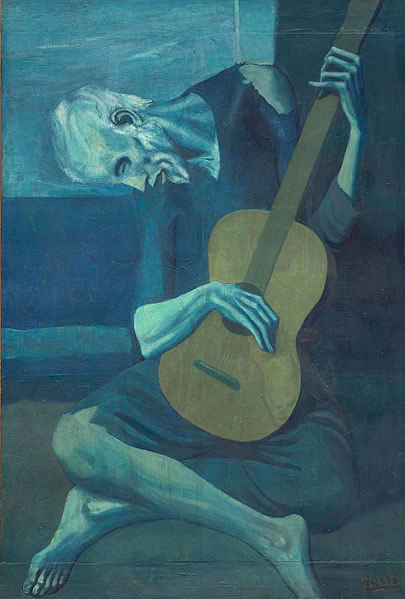
Painted in 1903, the Old Guitarist features a ragged old man hunched over his guitar on the streets of Barcelona, Spain. The Old Guitarist is an example of a work in what is referred to as Picasso's "Blue Period." During this time, roughly 1901-1904, most of Picasso's works were painted in shades of blue or blue-green with solitary, suffering figures and somber themes such as poverty and despair. The Blue Period is thought to represent a time in Picasso's life when he suffering from severe depression, brought on by the suicide of his close friend Carlos Casagemas.
Back to top
Portrait of Suzanne Bloch
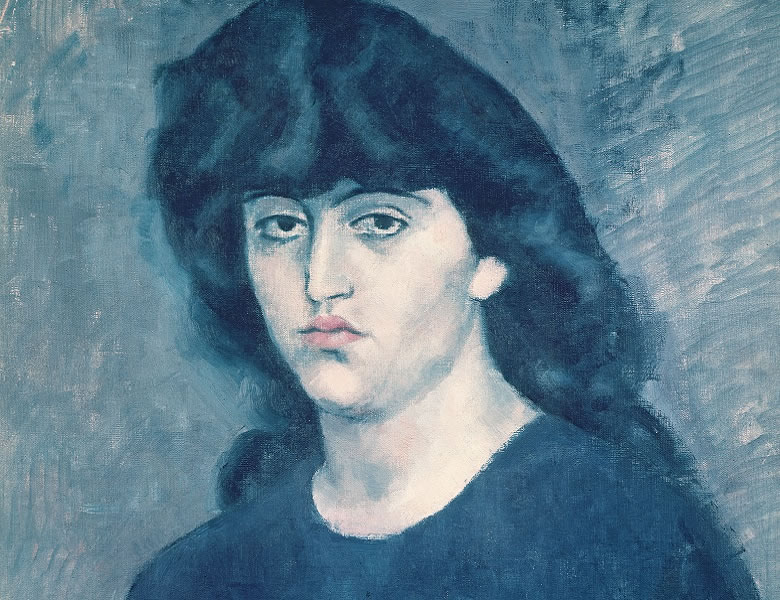
Portrait of Suzanne Bloch was painted by Picasso in 1904, at the end of his "blue period." The painting, with its monochromatic blue-green shades, is characteristic of his works during this period. Suzanne Bloch was a singer and sister of a prominent French violinist. Bloch herself owned the portrait, but her family sold it after she died. It eventually made its way to the Sao Paulo Museum of Art in Brazil where it was stolen in an elaborate heist in 2007. Sao Paulo police recovered the undamaged portrait, estimated to be worth over $50 million dollars, in 2008.
Back to top
Three Musicians

The Three Musicians was painted by Picasso in 1921. In fact, The Three Musicians is the name of two very similar paintings made that year. These paintings each feature a harlequin (jester-like character) with a guitar, a pierrot (a mime) playing a clarinet and a signing monk with sheet music. The harlequin represents Picasso himself; the pierrot represents French poet and novelist Guillaume Apollinarie; and the monk represents French writer Max Jacob. The painting's jigsaw-like composition is a perfect example of the Cubist movement of the time.
Back to top
Family in Saltimbanques

Picasso painted Family in Saltimbanques in 1905. It is considered the masterpiece of the period of time in Picasso's life known as the Rose Period or Circus Period. The Rose Period followed his "Blue Period," and is characterized by the use of bright colors such as pink and orange, in contrast to the somber blues and greens of the Blue Period. Picasso paintings of the Rose Period often feature clowns, circus performers, or harlequins.
Back to top
Maya with Doll

Maya with Doll is an oil painting made by Picasso in 1938. Maya with Doll is painted in cubist style and features Picasso's daughter, Maya, clutching her doll. Picasso was among /artists who pioneered the cubist movement. Cubism can be defined as a type of art in which objects are broken apart and reassembled in an abstract way, so that each object is depicted from multiple viewpoints. In 2007, Maya with Doll was stolen from the home of Picasso's granddaughter. Luckily, it was recovered by French police later that year.
Back to top
Guernica

Guernica is one of Picasso’s most well-known works and was created in response and in protest to the 1937 bombing of the Basque village of Guernica in Northern Spain during the Spanish Civil War. The large, 7.8 meter wide mural emphasizes the horrors of war and the suffering inflicted on innocent civilians. The painting’s black, white, and grey tones are thought to convey an additional sense of sadness and chaos. Guernica quickly became an international anti-war symbol, although Picasso refused to allow the work to be shown in Spain until the war ended.
Back to top
|
